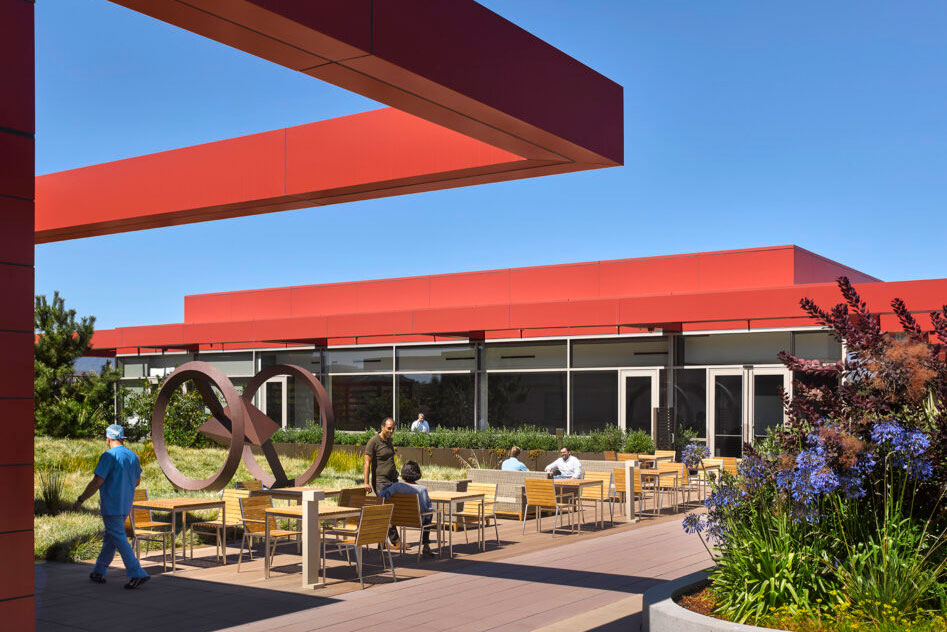Story at a glance:
- Stanford Hospital at 500 Pasteur Drive received LEED Gold certification in 2022.
- Going forward Stanford aims to achieve LEED Gold for every major renovation and construction project.
Stanford University in Palo Alto is home to one hospital system that’s continually exploring the evolving territory of sustainable health care design. Modular construction is one big topic they’ve focused on recently.
Modular design allows spaces to be easily reconfigured depending on what a clinic needs. Offices can become exam rooms or exam rooms can become treatment rooms without the need for large, costly, and material-intensive renovations.
As part of their recent modular construction efforts Stanford Health Care is increasingly turning to vacuum-based plumbing. These systems are easier to reconfigure than traditional gravity-based plumbing and use less water, which is more sustainable and sanitary.
In all building projects Stanford is looking for environmentally friendly and sustainable building materials, flooring, and furnishings—even if that means a larger upfront cost.
“It’s a bit of a learning process as we go, as greener materials become available,” says Molly Fries, Stanford’s interim director of operational excellence. “We do look at things from a life cycle analysis perspective, moving away from just looking at the first cost.”

Photo courtesy of Stanford
Going forward Stanford aims to achieve LEED Gold for every major renovation and construction project. They first received the certification at a new hospital completed in 2019. “It’s quite unusual for a hospital to achieve that,” says Helen Wilmot, Stanford’s chief facilities and sustainability officer. “Stanford is definitely ahead of the curve.”
But achieving LEED certification requires far more than just reducing waste and using greener materials. “The infrastructure is where it’s at. And for a health care building that’s the hardest part,” Wilmot says.
Hospitals face particular challenges when it comes to their heating, ventilation, and air conditioning systems. Hospital HVAC systems are highly specialized to control disease spread. Wilmot says some Stanford facilities have 20 individual zones, all with their own regulated humidity, temperature, airflow, and air pressure.
Designing a system that can accomplish those tasks while also being energy-efficient is difficult. “We have very sophisticated designers to help us with that. We’re asking them to think how to make it more sustainable,” Wilmot says.
Natural gas is another obstacle facing hospitals wanting to go green. In health care settings natural gas is primarily used to make steam, which is used to sanitize medical instruments, cookware, and dishes. The steam is created in an onsite steam plant often powered by natural gas. “We use a lot of natural gas,” Wilmot says. “Producing steam with electrification is not standard.”
She says creating more sustainable systems requires designers, architects, general contractors, and subcontractors to be familiar with health care–specific building needs. And once the facility is built engineers must be trained to keep these innovative systems up and running. “It has to be an entire flow of change that occurs. All the parties along that chain have to be committed,” she says.
As a large academic medical center, Wilmot says Stanford bears a responsibility to lead the way. “We are meant to be a role model for how it is we address human planetary health,” she says. “We cannot do it alone. The architects have to do it with us. The contractors have to do it with us. The suppliers have to do it with us.”




